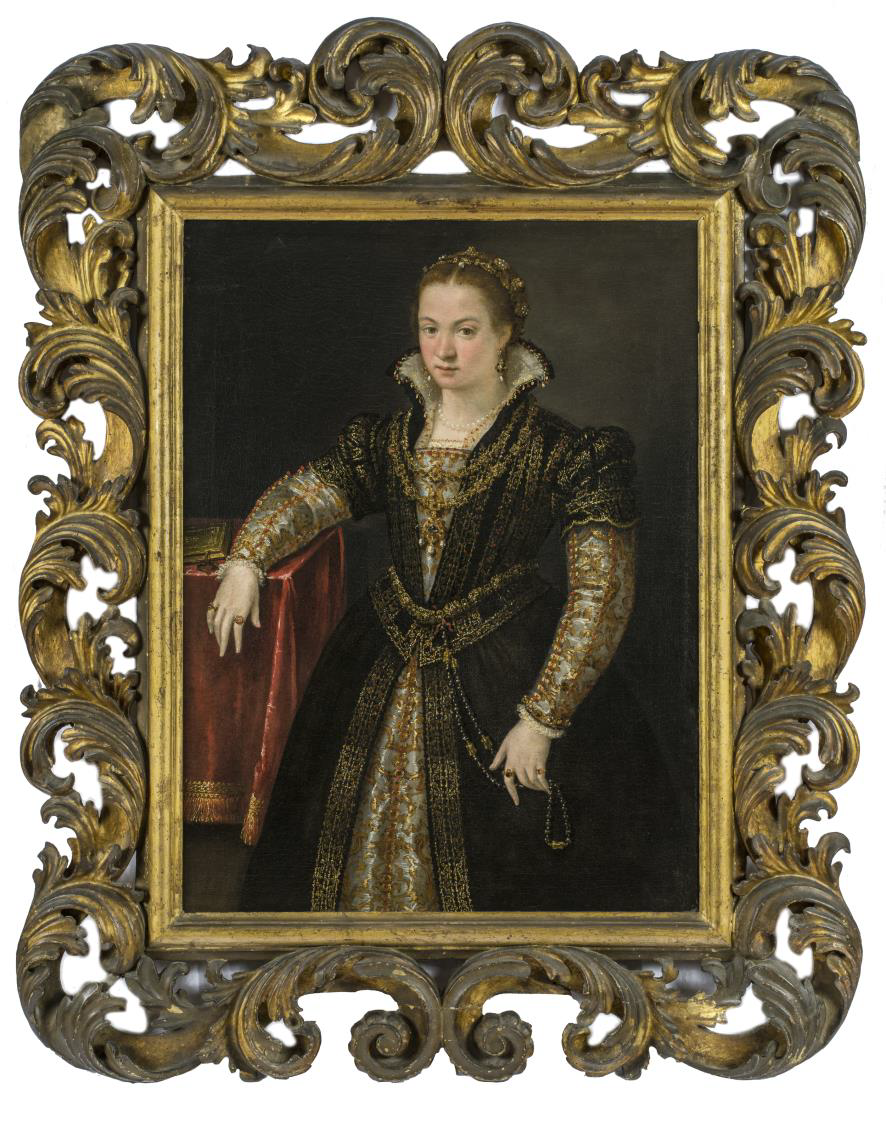

Lavinia Fontana (Italian, 1552-1614), Portrait of a Lady, 1585
RICHMOND, VA — The Virginia Museum of Fine Arts announced its recent acquisition of "Portrait of a Lady" (1585) by Lavinia Fontana (1552-1614), a celebrated woman artist from Bologna.
“Lavinia Fontana was a pioneer during her lifetime. The discovery and acquisition of this piece elevates VMFA’s collection of late Renaissance art,” says Alex Nyerges, VMFA’s CEO and director. “Her work demonstrates the significant yet often unrecognized artistic contributions women have made throughout history.”
Fontana was one of the first women artists in Italy to work alongside her male colleagues. Owing to her talent and business acumen, she later became a trailblazer in her role as head of a successful studio. As early as the 1580s, Fontana’s portraiture was highly favored among Bolognese noble families. In the early 1600s, she moved to Rome where she became a painter at the papal court.
Best known for her portraits, Fontana was a renowned painter of the Mannerism movement during the Late Renaissance period. Her paintings reflect a maturation of the conventions of the Mannerist style, and she plays an important role in the chapter of art history following the High Renaissance and immediately preceding the Baroque period. Despite the superficial naturalism that this portrait presents at first glance, the artist has cleverly manipulated the dimensions within the composition by subtly exaggerating the proportions of her sitter’s costume to give it a monumental aspect. The effect is magnified by the way that Fontana flattens the obscure background with its curiously positioned table, making the figure stand out in stark relief while simultaneously creating an image that is both spiritually intense and enigmatic. These contrivances, all of which are typical of earlier Mannerist artists such as Veronese and Tintoretto, allowed Fontana to create elegant compositions that flaunted her technical virtuosity.
The young woman in the portrait is dressed in an extravagant amount of gold, jewels, precious stones and pearls. During this era, pearls symbolized the purity of both body and soul. To further emphasize this aspect of her sitter’s moral character, Fontana depicts her toying gracefully with a rosary that is attached to her belt, a gesture that reminds the viewer of her pious dedication to daily prayer. Portraits of this kind were often part of the traditions surrounding aristocratic marital engagements. Fontana’s indulgence in representing the luxurious ornamentation, combined with her use of compositional elements intended to convey the Catholic piety and chastity of the sitter, ensure that the future bride is portrayed as a paragon of both wealth and virtue.
Although no evidence remains that might attest to the sitter’s identity, recent research has proposed that it could be an early portrait of Isabella Gonzaga (1565–1637). A member of a prestigious princely family of Mantua, Isabella inherited the minor principality of Sabbionetta from her father, and she was an influential presence at the courts of the duke of Milan and the king of Naples.
“Here is a woman’s regard for another woman during an era when the very contours of womanhood were principally being delineated by men. A noble woman in this society had to struggle to affirm her place, her dignity and her authority,” says Dr. Sylvain Cordier, VMFA’s Paul Mellon Curator and Head of the Department of European Art. “This representation of a confident and charismatic young noble woman will play a vital role in the development of the spectacular Grand Portrait Gallery that we are preparing for 2025. This gallery will assist our visitors to interrogate the constantly changing conventions governing gendered representation in European art over the course of several centuries.”
Portrait of a Lady is currently on view in VMFA’s Atrium. For more information about the museum’s collection of Renaissance art, visit www.VMFA.museum.